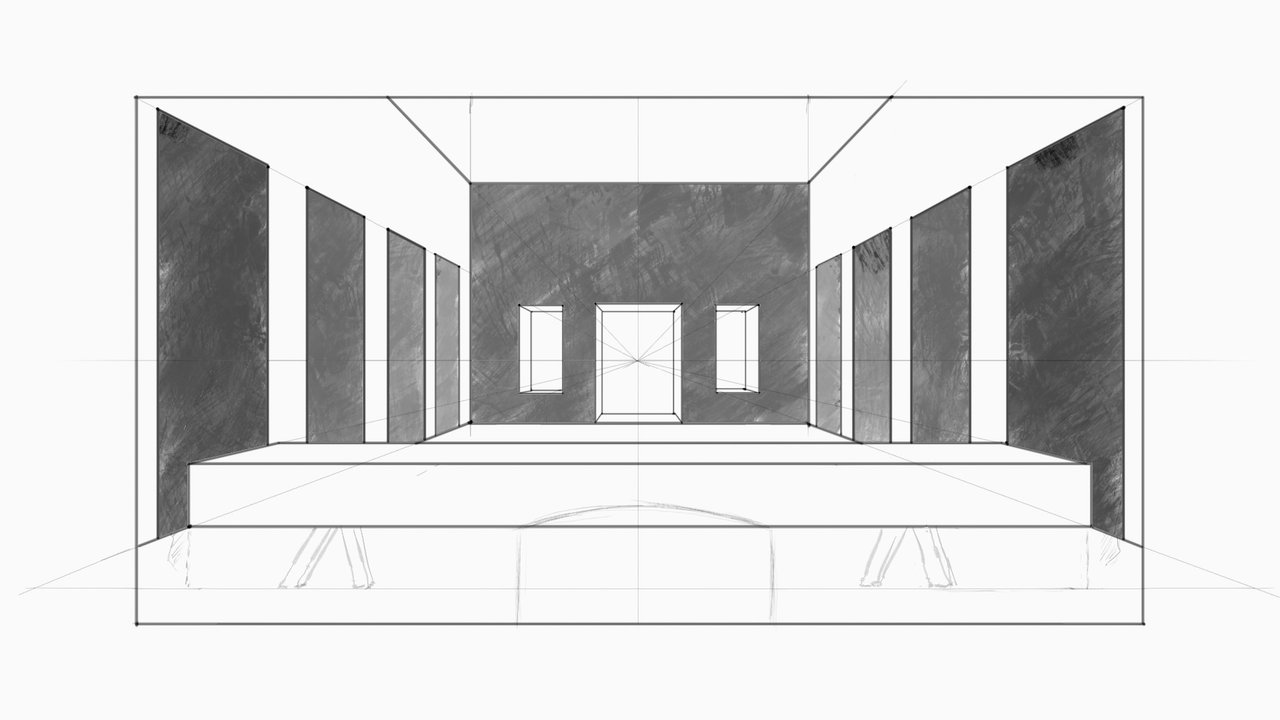
Hi friends!
Now we continue adding details such as tapestries on both sides, on both walls. We are also going to draw the three windows on the back wall.
We'll make some divisions on the upper line, first letting a small space to both sides, right and left, as shown below.
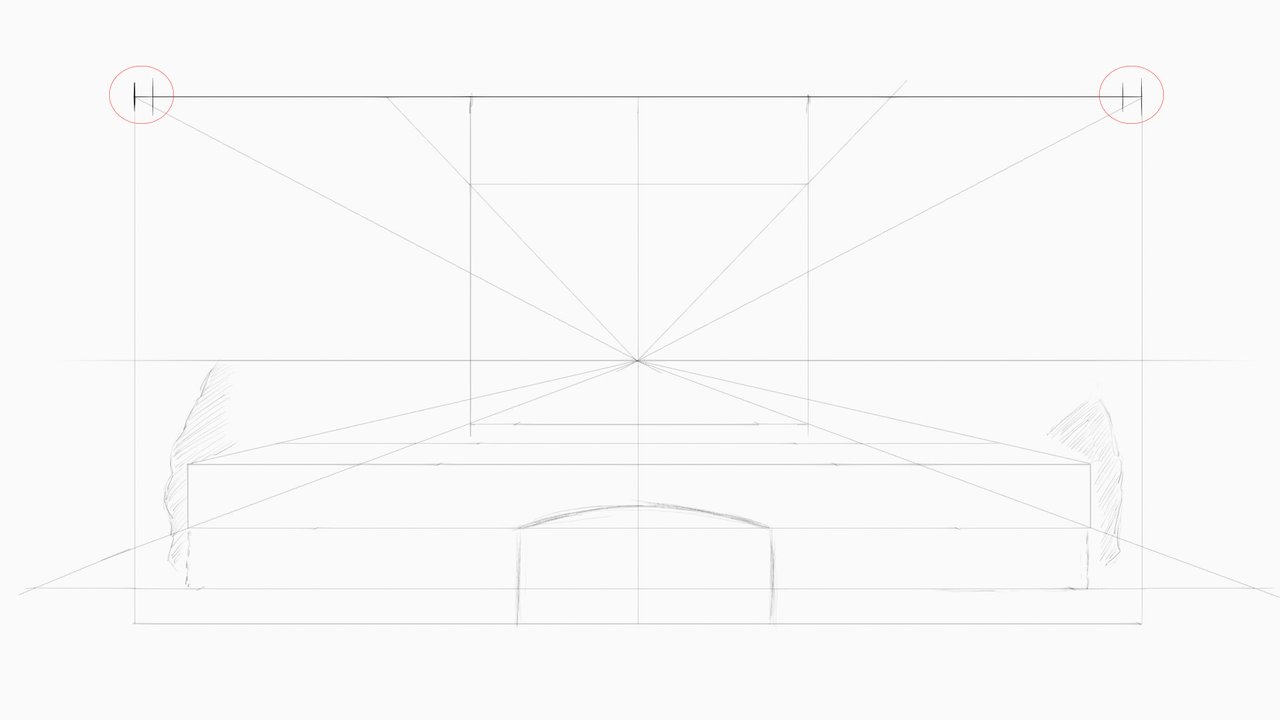
Then, we will divide the remaining stroke (highlighted with the red key) into four.
The next step is to divide each stroke of 1/4 into two but with different sizes, size "a" and size "b" for the four strokes.
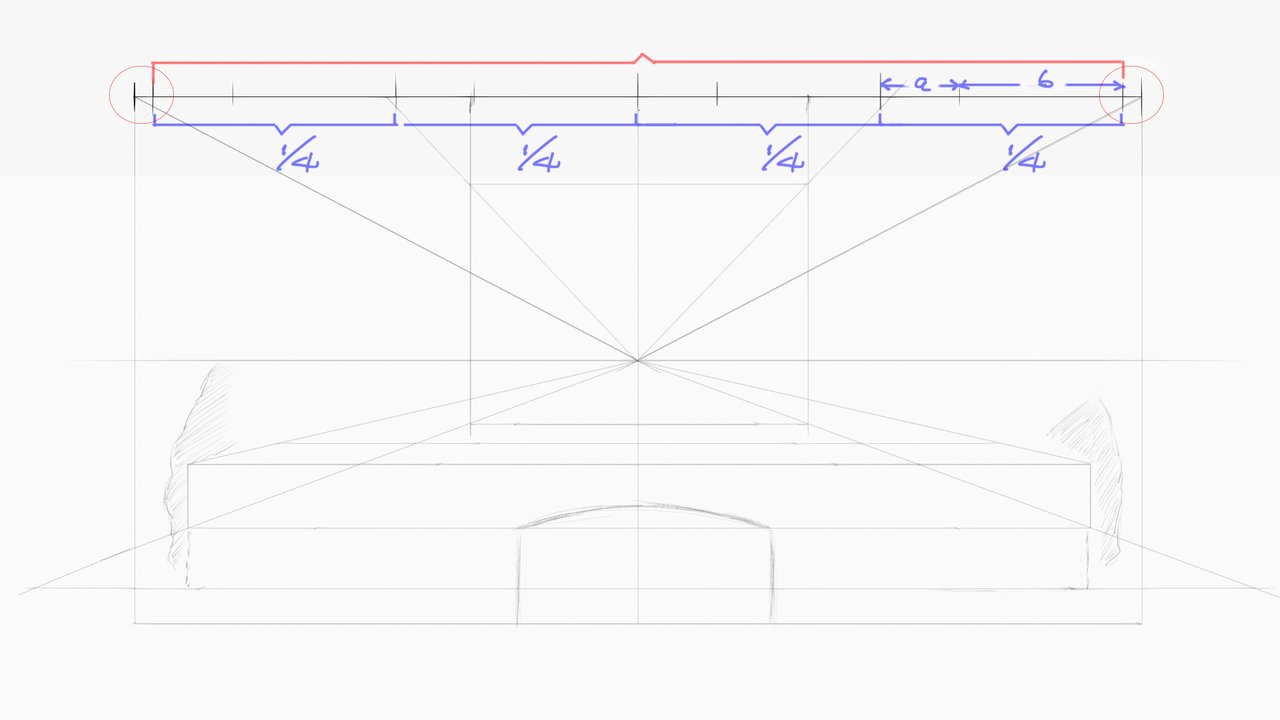
This is the result of the divisions made on the top edge of the drawing.
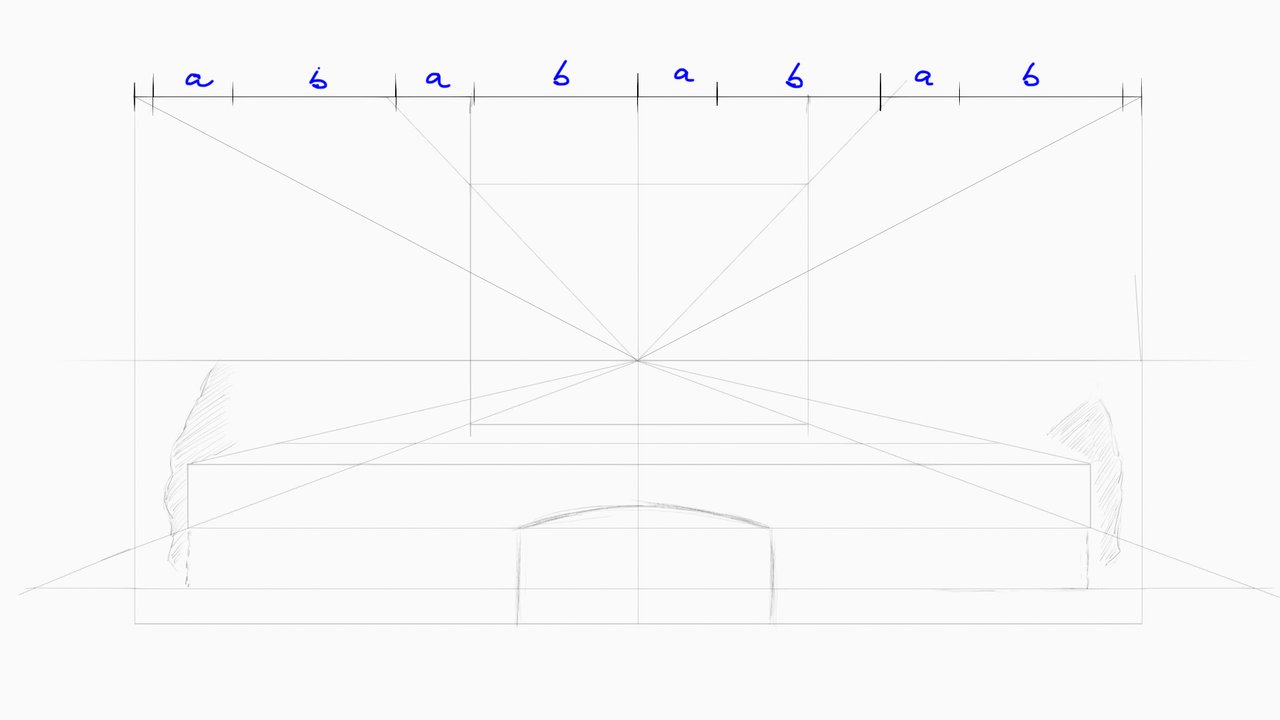
By drawing a line starting from the left, as shown below, until it intersects it on the right side at eye- level line, we can obtain an auxiliary vanishing point (AVP) that allows us to draw all the vanishing lines from the divisions made at the top edge.
With a red arrow I have pointed to the left the starting point, then the intersection where this line crosses the two walls at the height defined for the tapestries, remember that this line initially helped us to find the VP in the centre; finally, the red arrow where the line crosses the horizon line.

On the intersections with the diagonal we trace the vertical lines as shown below.
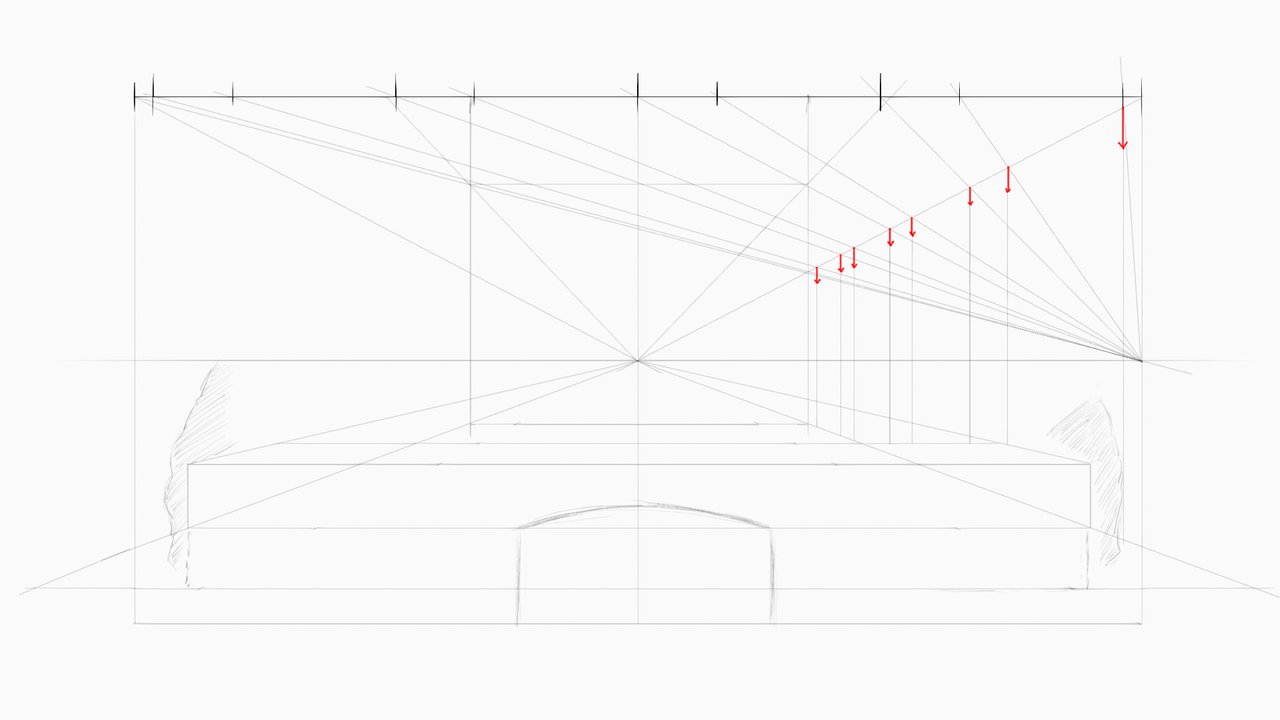
Then, we draw the horizontal lines to the left until they cross the left diagonal.
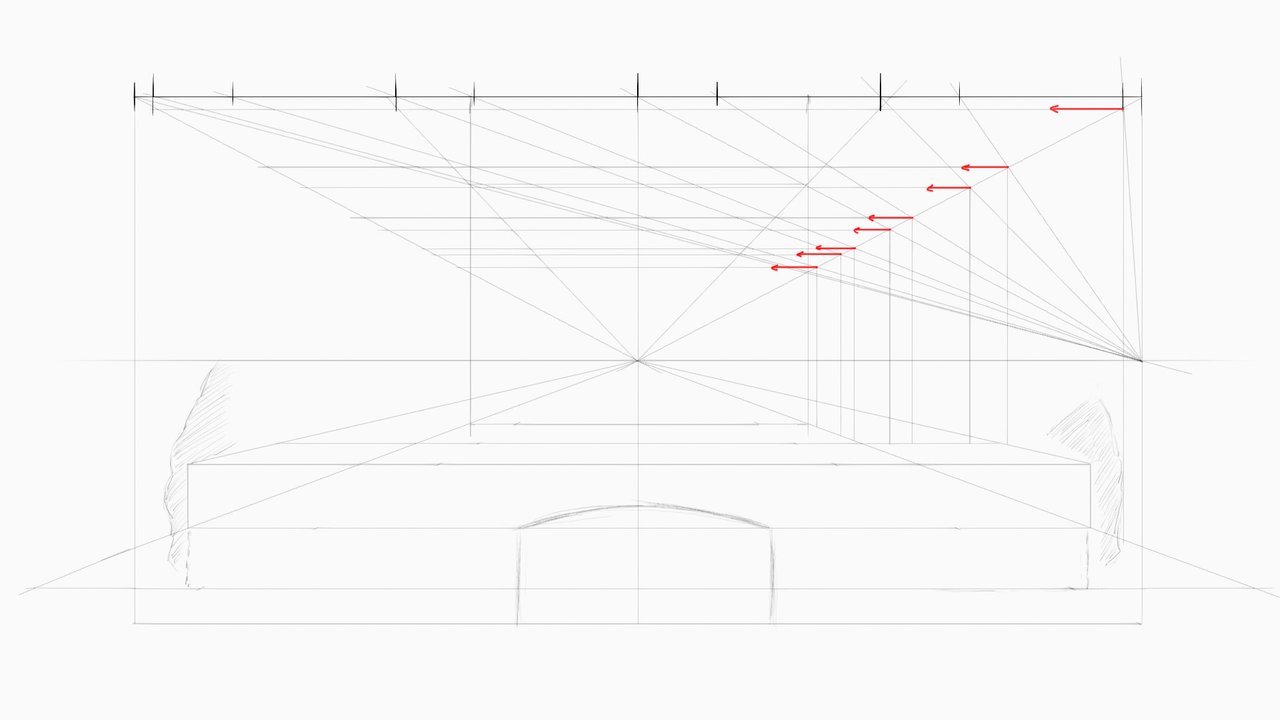
Finishing by drawing the corresponding vertical lines as shown below.
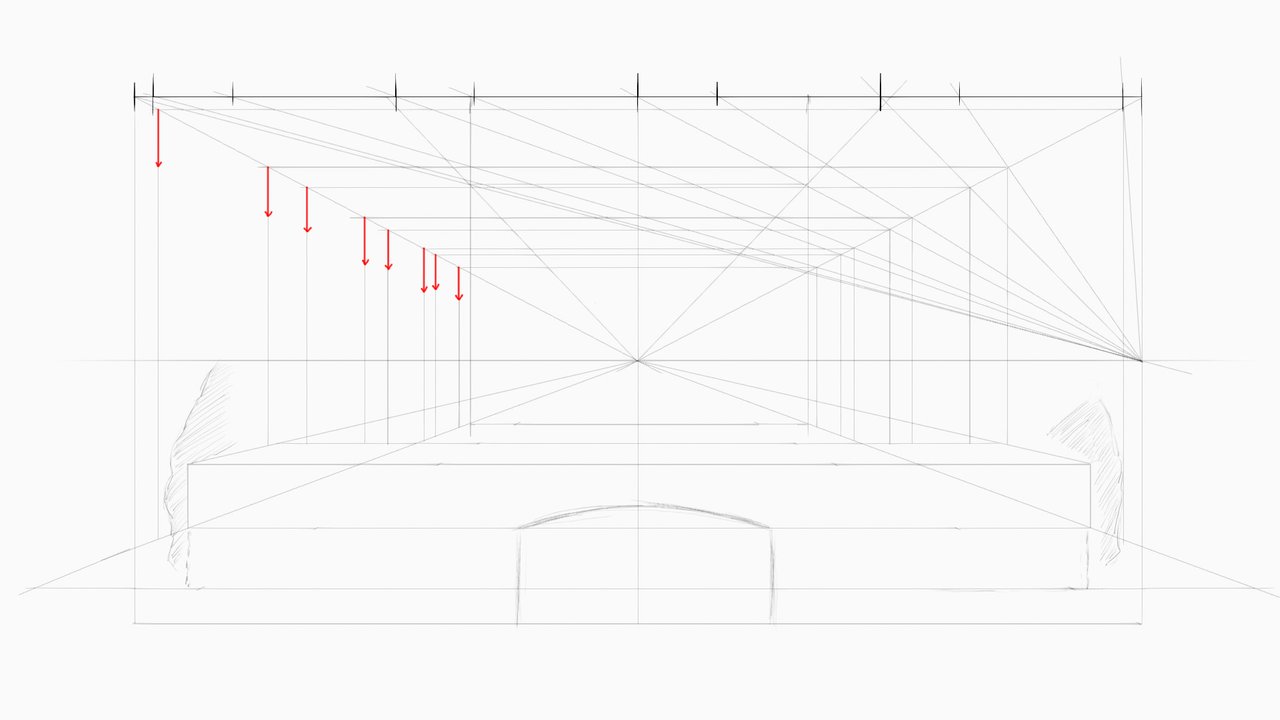
To take care of drawing the windows on the rear wall we erase most of the lines, leaving only the vertical and the horizontal that give us the position of the central VP. Draw the windows as shown, one large one reaching the floor in the center and two smaller symmetrically opposite sides.
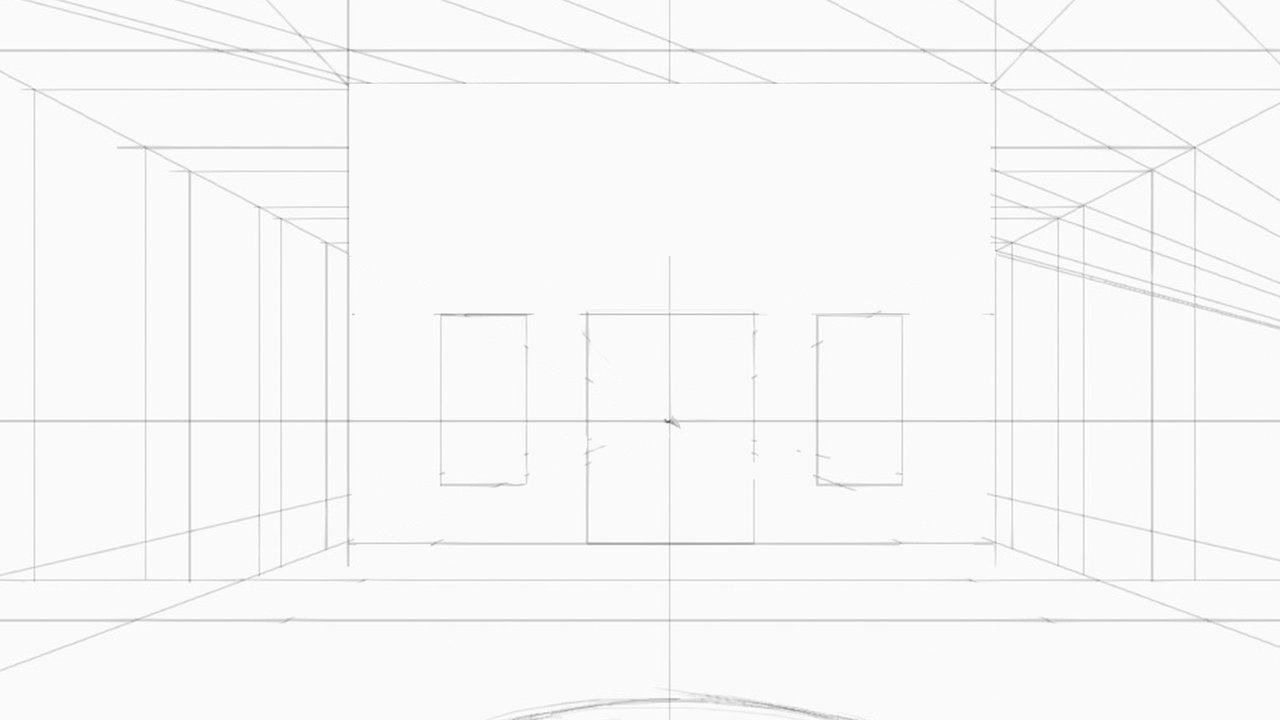
Drawing the vanishing lines we get to draw the wall thickness of the windows.
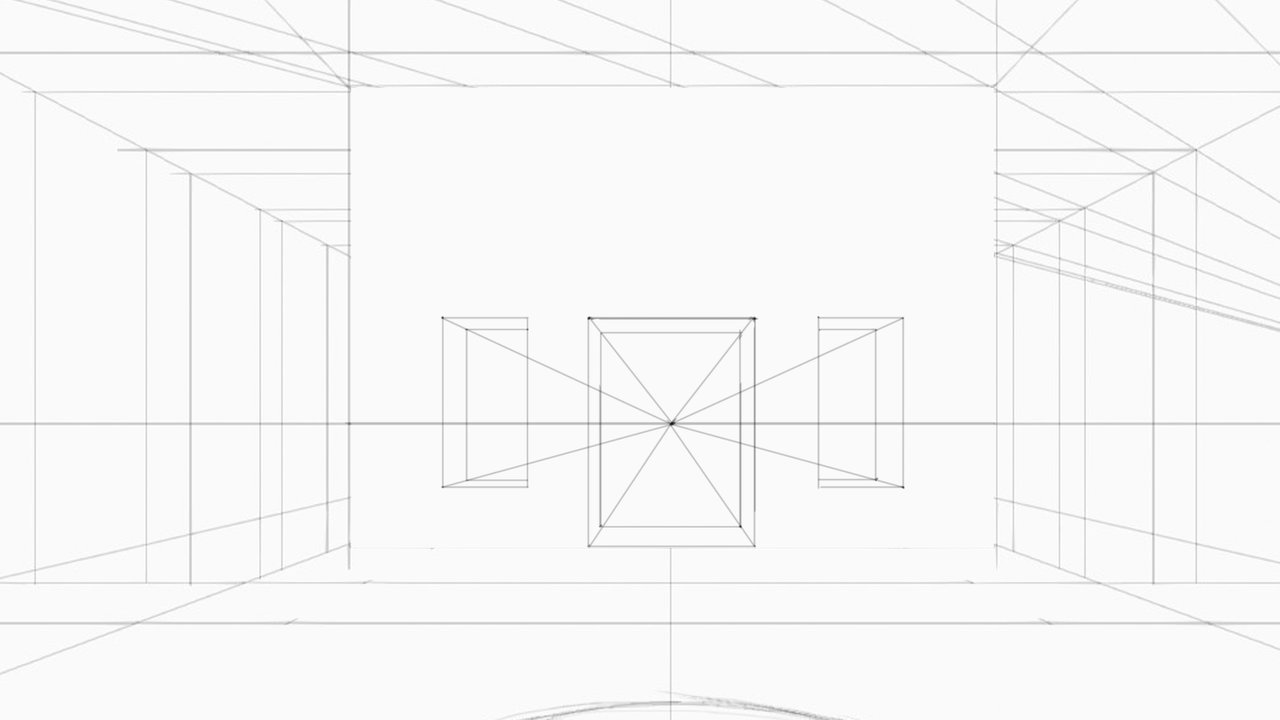
This is the full composition of the space painted by Leonardo da Vinci in The Last Supper. In the next posts, we'll continue by drawing the details for this composition.

I wish you a very nice day and good exercise!
Well, our friend @arcoiris is back with his magnificent watercolour lessons.
woxartschool art steemexclusive steemit steem
Here are the links to the previous related posts.
1 - 2 - 3 - 4 -
5 - 6 - 7 - 8 - 9 - 10 -
11 - 12 - 13 14 - 15 -
16 - 17 - 18 - 19 - 20 - 21 - 22 - 23 - 24 - 25 -
26 - 27 - 28 - 29 - 30 - 31 - 32 - 33 - 34 - 35 - 36 - 37 - 38 - 39 -
40 - 41 - 42 - 43 - 44 - 45 - 46 - 47 - 48 - 49 - 50 - 51-feedback - 52-Masterclass - 53-Homework Contest #6 - 54-Lesson - 55-Lesson - 56-Lesson - 57-Lesson - 58-feedback - 59-feddback - 60 Masterclass - 61-HW Contest #7 - 62-Lesson - 63-Lesson - 64-Lesson - 65-Lesson - Lesson-66 - 67-feedback - 68-feedback - 69-feedback - 70-Masterclass - 71-Homework Contest #8 - 72-Lesson - 73-Lesson - 74-Lesson - 75-Lesson - 76-Masterclass - 77-Homework - 78-Lesson - 79- Lesson - 80-lesson - 81-feedback - 82-lesson - 83-Masterclass - 84-HW contest - 85-feedback - 86-lesson - 87-lesson - 88-lesson - 89-feedback - 90-feedback - 91-lesson - 92-Masterclass - 93-Masterclass II
Also, thanks to @xpilar for making these initiatives possible with their great support.
